FFVP CFD Pilot - Individual
Evaluation of the Pilot Project for Canned, Frozen, or Dried (CFD) Fruits and Vegetables in the Fresh Fruit and Vegetable Program (FFVP)
FFVP-CFD_Appendix_E4c_DietaryRecall_CAPI_ScreensShots.(2014-06-30)
FFVP CFD Pilot - Individual
OMB: 0584-0598
Evaluation of the Canned, Frozen, or Dried Fruits and Vegetables Pilot Project in the FFVP
Appendix E.4c. in-school diary-assisted DiETAry Recall (AND screen shots)
OMB Control No: 0584-XXXX
Expiration date: XX/XX/XXXX
In-School Diary-assisted Dietary Recall
The in-school dietary recall will be conducted using an electronic multiple pass method that consists of five steps that utilize different strategies to encourage students to think about their intake in different ways in order to maximize their ability to remember and report the foods they have eaten. The five steps of the multiple pass dietary recall method include:
Step 1 - Quick List: The first step obtains a quick report of easily remembered foods and beverages. The interviewer reads a standard memory prompt that suggests strategies for remembering foods and beverages consumed during the time at school (see Exhibit A).
Step 2 - Forgotten Foods List: The interviewer encourages respondents to think about specific categories of foods that are frequently forgotten, such as beverages, sweets, savory snacks, fruits, vegetables, cheese, breads, tortillas, and rolls (see example in Exhibit B).
Step 3 - Time and Occasion pass: The interviewer encourages additional recall and reporting by helping the respondent to think about the times that foods and beverages were consumed and the types of eating occasions like a breakfast, a morning snack, lunch, and an afternoon snack at school (see Exhibit C).
Step 4 - Detail and Review Cycle: At this step, the interviewer probes for food descriptions and amounts using the student’s diary (Foods Eaten at School Today, FEST) as a guide along with known information as to the menu that same day served at school breakfast and school lunch. For foods brought from home or elsewhere and consumed in the school day, the source obtained will be recorded. Each eating occasion and the periods between are reviewed to check whether the respondent remembers any additional foods or beverages. Students use measuring aids (e.g. measuring cups and spoons, ruler) to help estimate the amounts of foods and beverages consumed at school for the target day (see example in Exhibit D).
Step 5 - Final Review: The student is asked one last time to remember anything else consumed during the school day (see Exhibit E).
According to the Paperwork Reduction Act of 1995, an agency may not conduct or sponsor, and a person is not required to respond to, a collection of information unless it displays a valid OMB control number. The valid OMB control number for this information collection is 0584-XXXX. The time required to complete this information collection is estimated to average 20 minutes per response, including the time for reviewing instructions, searching existing data sources, gathering and maintaining the data needed, and completing and reviewing the collection of information.
Exhibit A. Quick List Screenshot
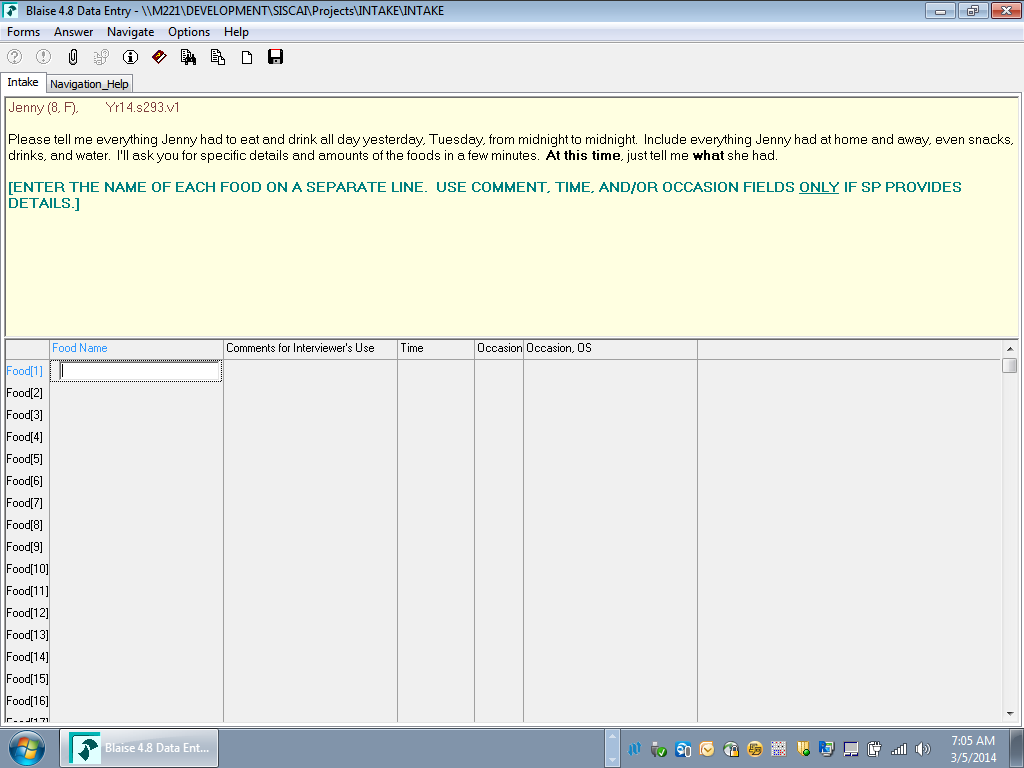
Note: The lead-in question will be changed to reflect the period at school rather than the previous 24 hours and reworded for the student as the respondent.
Exhibit B. Forgotten Foods List Screenshot (Example question)
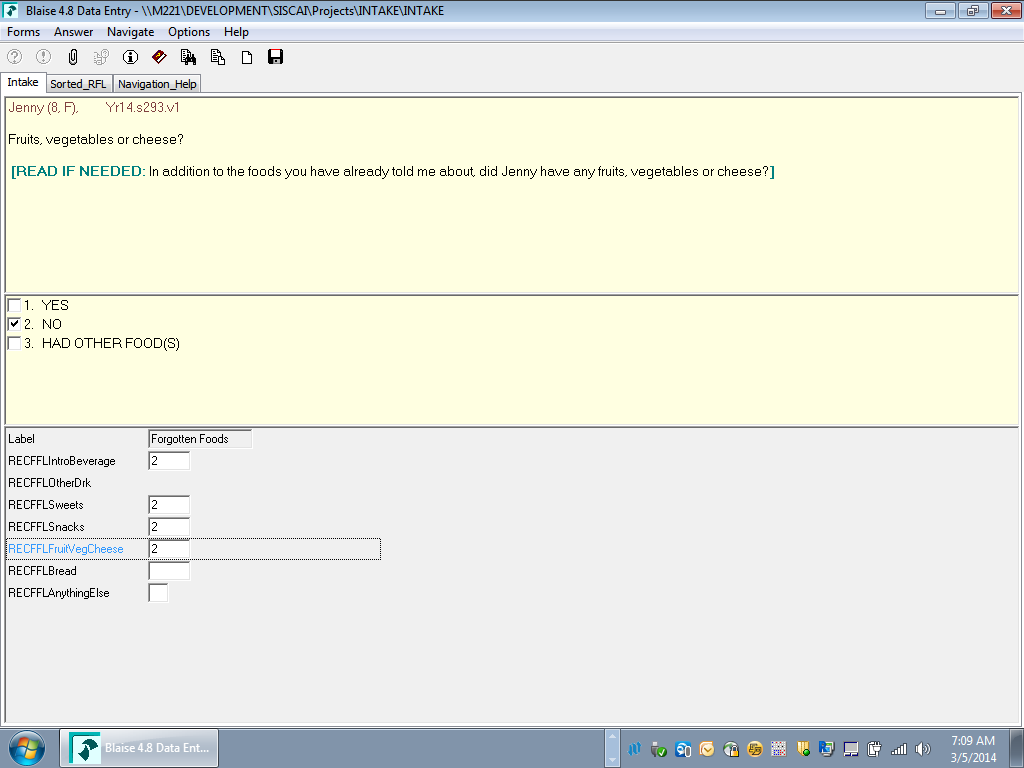
Exhibit C. Time and Occasion Pass Screenshot
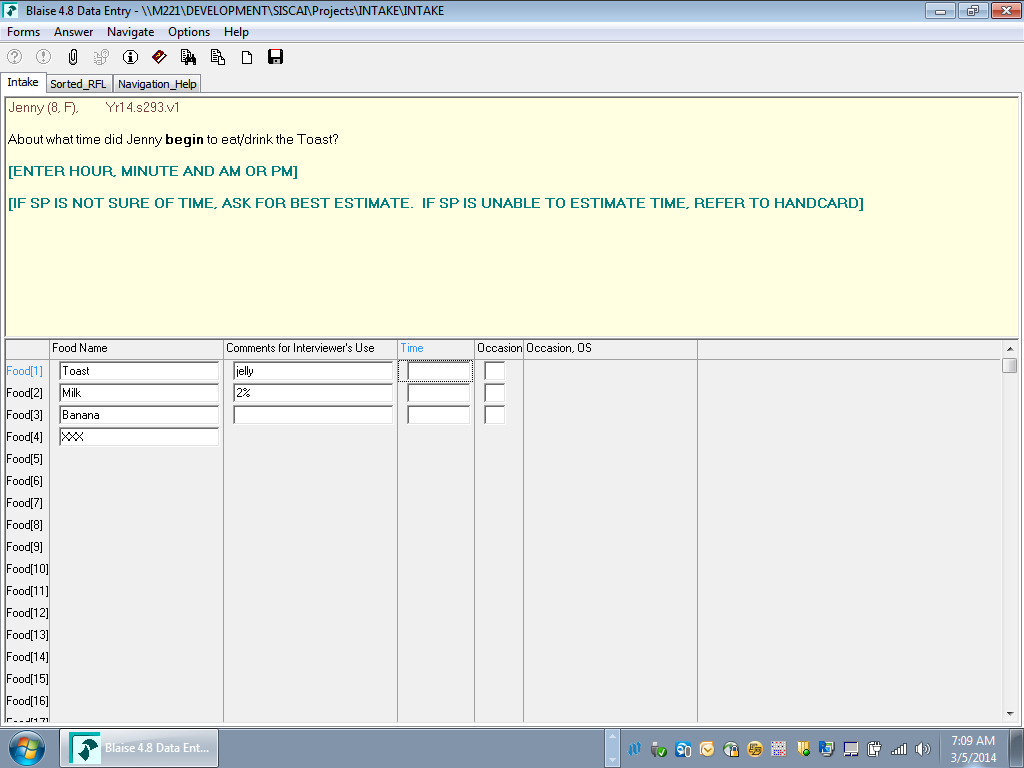
Exhibit D. Detail and Review Cycle Screenshot (Example question)
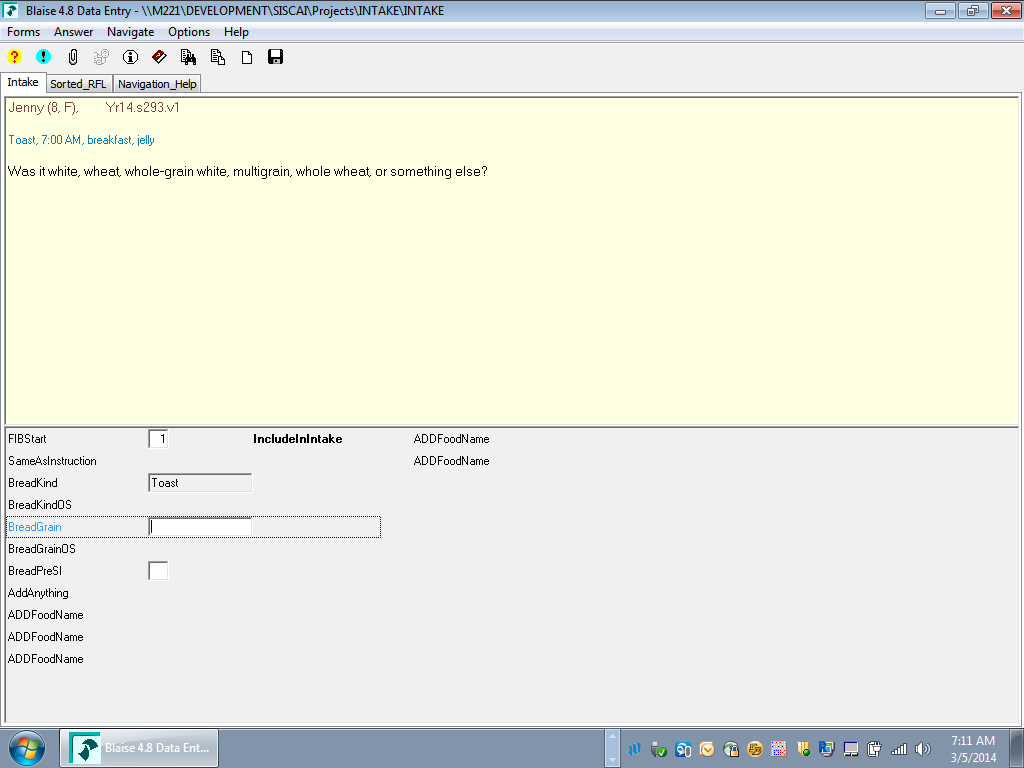
Exhibit E. Final Review Cycle Screenshot
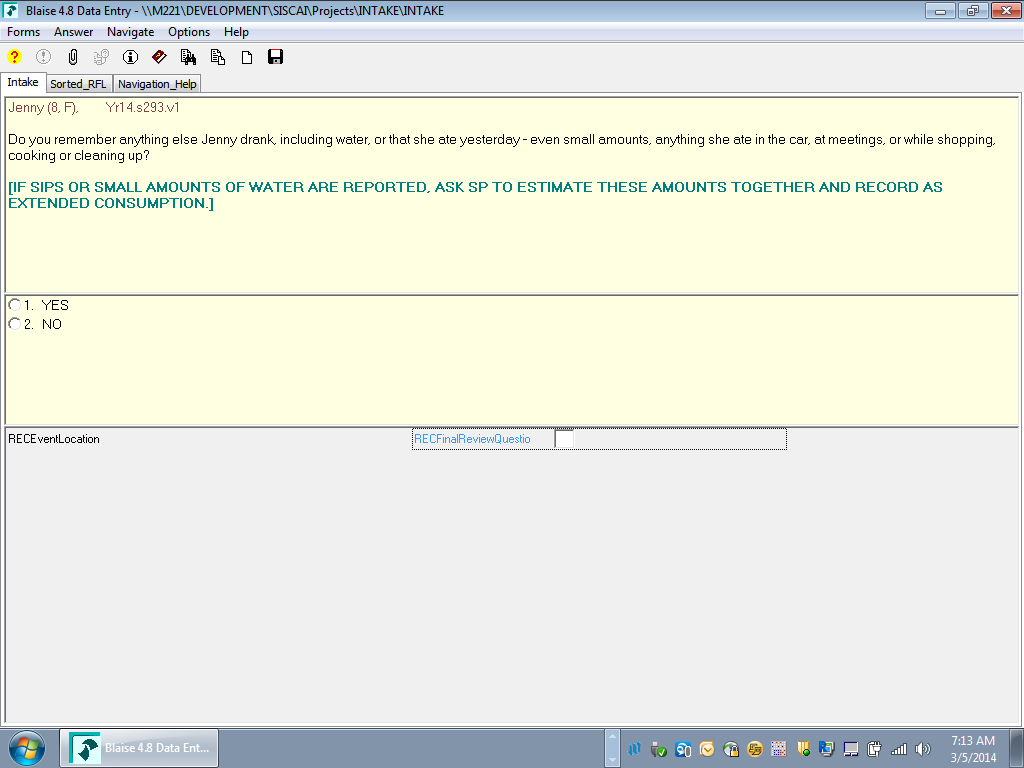
E.4c.
| File Type | application/vnd.openxmlformats-officedocument.wordprocessingml.document |
| Author | Charlotte Cabili |
| File Modified | 0000-00-00 |
| File Created | 2021-01-25 |
© 2025 OMB.report | Privacy Policy